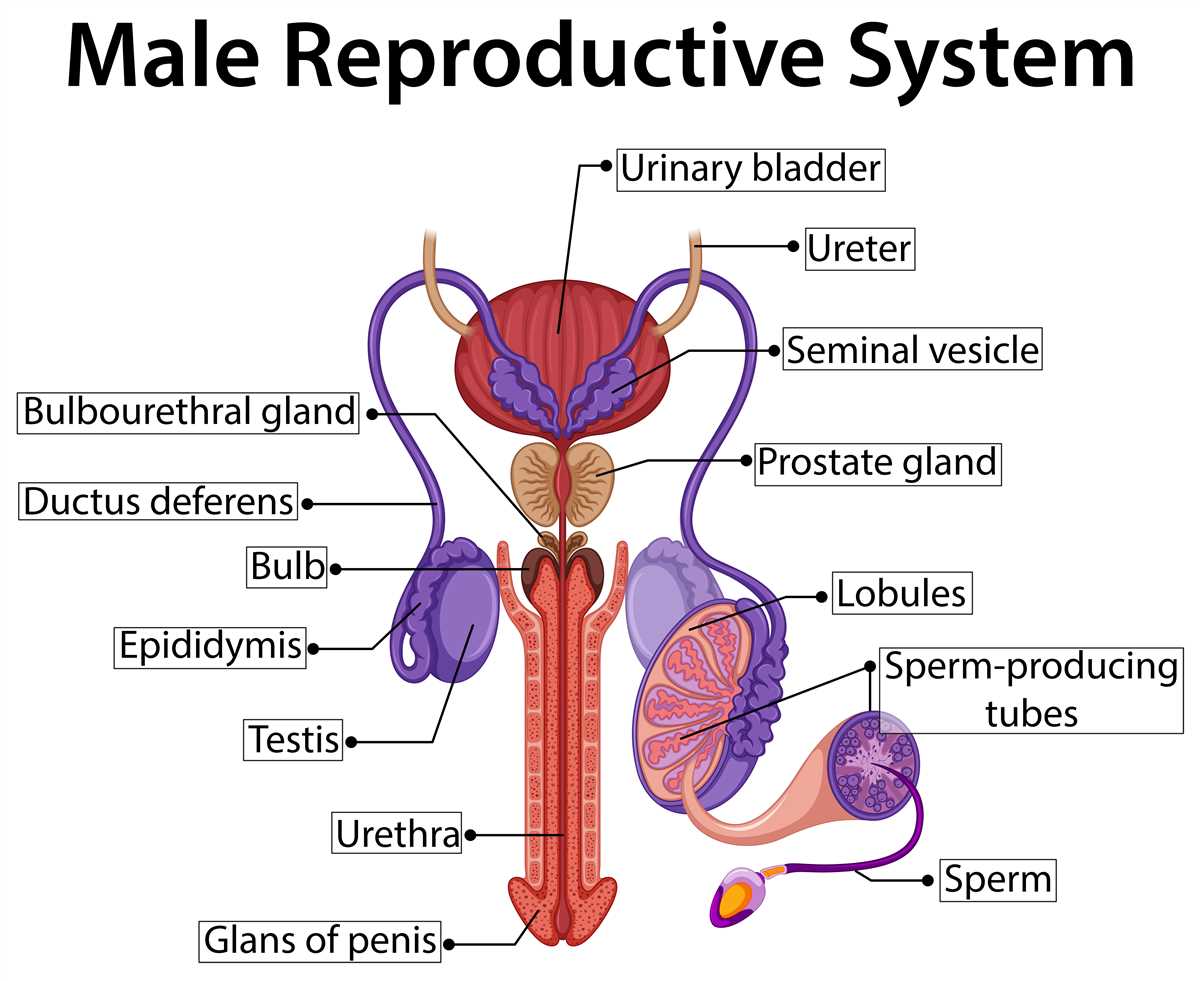
The reproductive system of a male is responsible for the production of sperm and the delivery of sperm to the female reproductive system for fertilization. It is a complex system that involves several organs and structures working together to ensure reproductive success.
One of the key organs in the male reproductive system is the testes. Located in the scrotum, the testes are responsible for producing sperm through a process called spermatogenesis. Sperm is produced in the seminiferous tubules of the testes and then stored in the epididymis until it is ejaculated.
Another important structure in the male reproductive system is the penis. The penis is responsible for delivering sperm into the female reproductive system during sexual intercourse. It consists of three main parts: the root, which is attached to the pelvic region, the body, which contains erectile tissue, and the glans, which is the head of the penis.
The male reproductive system also includes several accessory glands that contribute to the production of semen. These glands include the seminal vesicles, the prostate gland, and the bulbourethral glands. These glands produce fluids that nourish and protect the sperm as they travel through the reproductive system.
Male Reproductive System: An Overview
The male reproductive system is a complex network of organs and structures that work together to produce and deliver sperm. It plays a vital role in human reproduction and is responsible for the production of male sex hormones. Understanding the anatomy and functions of the male reproductive system is crucial for comprehending the process of human reproduction.
Testes: The testes are the primary male reproductive organs. They are responsible for the production of sperm and the secretion of testosterone, the primary male sex hormone. The testes are located in the scrotum, outside the body, to keep the temperature lower than the body temperature for optimal sperm production.
Epididymis: The epididymis is a coiled tube that lies on top of each testicle. It serves as a storage and maturation site for sperm. Sperm produced in the testes travel to the epididymis, where they gain the ability to swim and fertilize an egg.
Vas Deferens: The vas deferens is a long, muscular tube that carries mature sperm from the epididymis to the urethra. During ejaculation, the vas deferens contracts to propel the sperm forward towards the urethra.
Prostate Gland: The prostate gland is a walnut-sized gland located just below the bladder. It produces fluid that, along with sperm from the testes and secretions from other glands, makes up semen. The prostate gland also plays a role in controlling urine flow.
Urethra: The urethra is a tube that runs through the penis and carries both urine and semen out of the body. It is divided into two sections: the prostatic urethra, which runs through the prostate gland, and the penile urethra, which extends through the length of the penis.
Penis: The penis is the external organ of the male reproductive system. It consists of three chambers of erectile tissue, which become engorged with blood during sexual arousal, causing an erection. The tip of the penis, called the glans, is sensitive and highly erogenous.
Overall Function: The male reproductive system works together to produce, store, and transport sperm, as well as to deliver sperm into the female reproductive system during sexual intercourse. This process allows for fertilization of an egg and the initiation of pregnancy.
References:
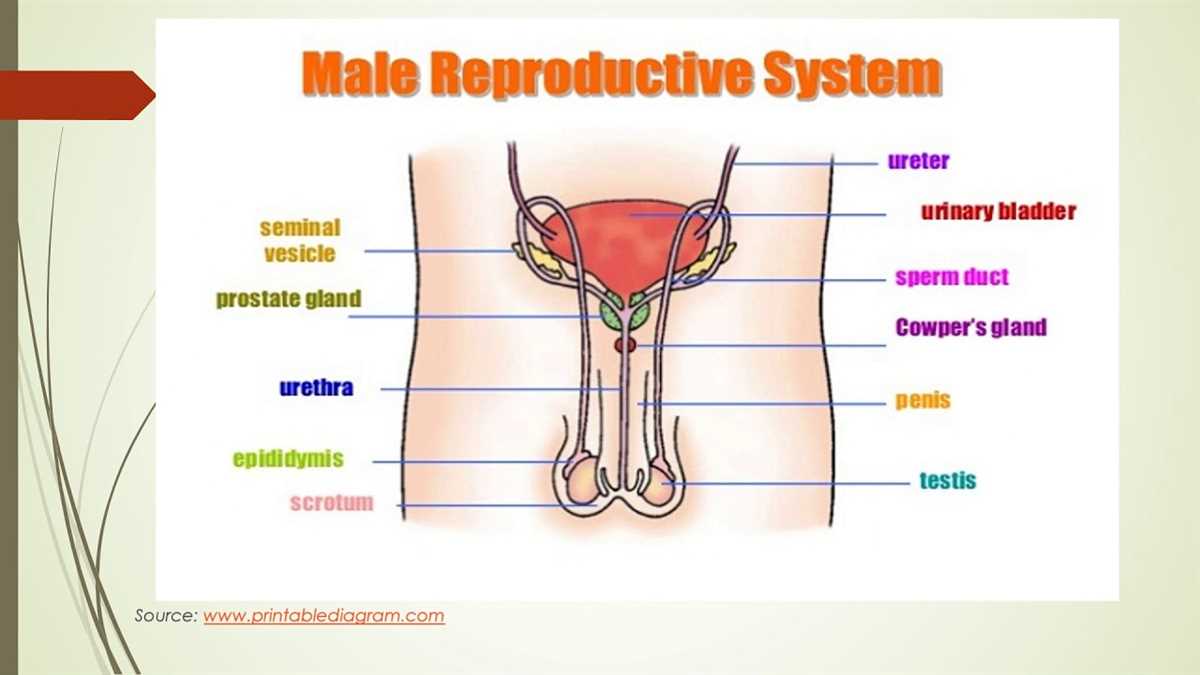
- https://www.ncbi.nlm.nih.gov/pmc/articles/PMC3253721/
- https://www.healthline.com/human-body-maps/male-reproductive-system
Testes: The Primary Male Reproductive Organs
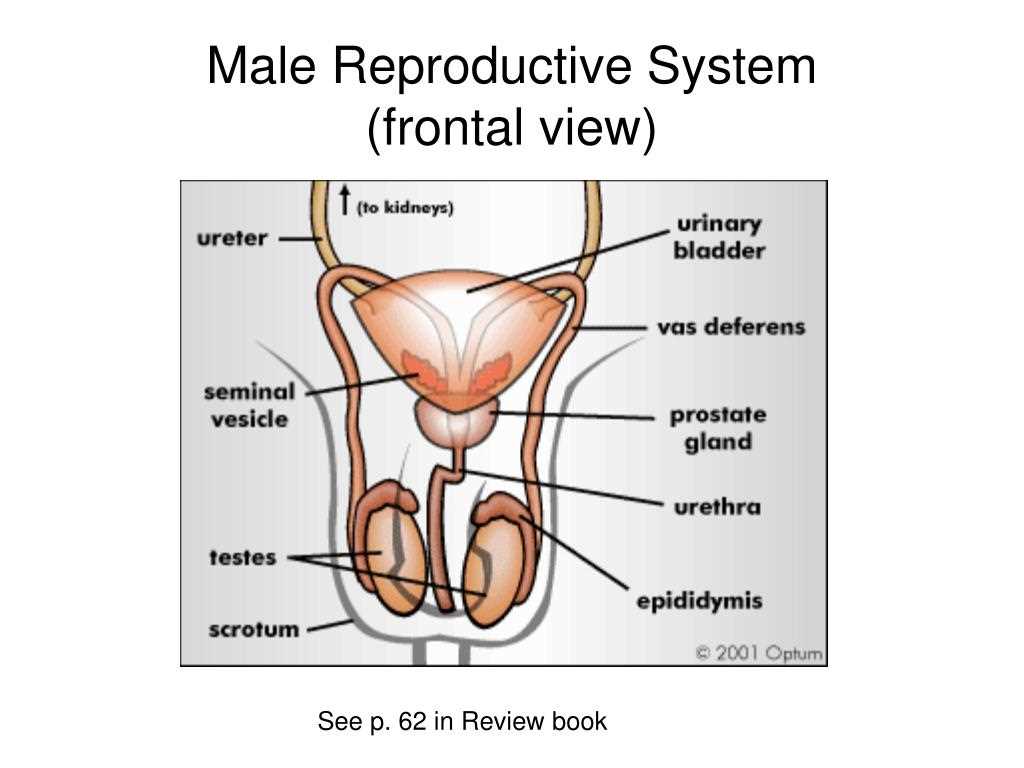
The testes are the primary male reproductive organs responsible for the production of sperm cells and the secretion of testosterone, the primary male sex hormone. They are oval-shaped structures located within the scrotum, which is a loose pouch of skin located outside the body, behind the penis. The testes are contained within a tough, fibrous covering called the tunica albuginea, which helps protect them and maintain their shape.
Each testis is made up of several lobules, each containing seminiferous tubules. These tubules are responsible for the production of sperm cells through a process called spermatogenesis. Spermatogenesis involves the continuous division and differentiation of spermatogonia (immature sperm cells) into mature sperm cells called spermatozoa. The process of spermatogenesis takes approximately 74 days.
In addition to sperm production, the testes also secrete testosterone. Testosterone is a crucial hormone involved in the development and maintenance of male reproductive tissues, including the prostate gland, seminal vesicles, and penis. It also plays a role in the development of secondary sexual characteristics, such as facial hair, deepening of the voice, and muscle and bone growth.
The testes are highly vascular organs, meaning they receive a rich blood supply. This blood supply is important for the delivery of nutrients and oxygen to support the metabolic activity of the testes. It is also responsible for the regulation of testicular temperature. The testes need to be slightly cooler than body temperature for optimal sperm production, which is why they are located outside the body in the scrotum. The scrotum helps regulate the temperature of the testes by contracting or relaxing the muscles in response to changes in environmental temperature.
In summary, the testes are the primary male reproductive organs responsible for sperm production and testosterone secretion. They are located within the scrotum and consist of seminiferous tubules that produce sperm cells through spermatogenesis. The testes also play a crucial role in the development and maintenance of male reproductive tissues and secondary sexual characteristics. Additionally, they rely on a well-regulated blood supply and temperature for optimal function.
Epididymis: The Site of Sperm Maturation
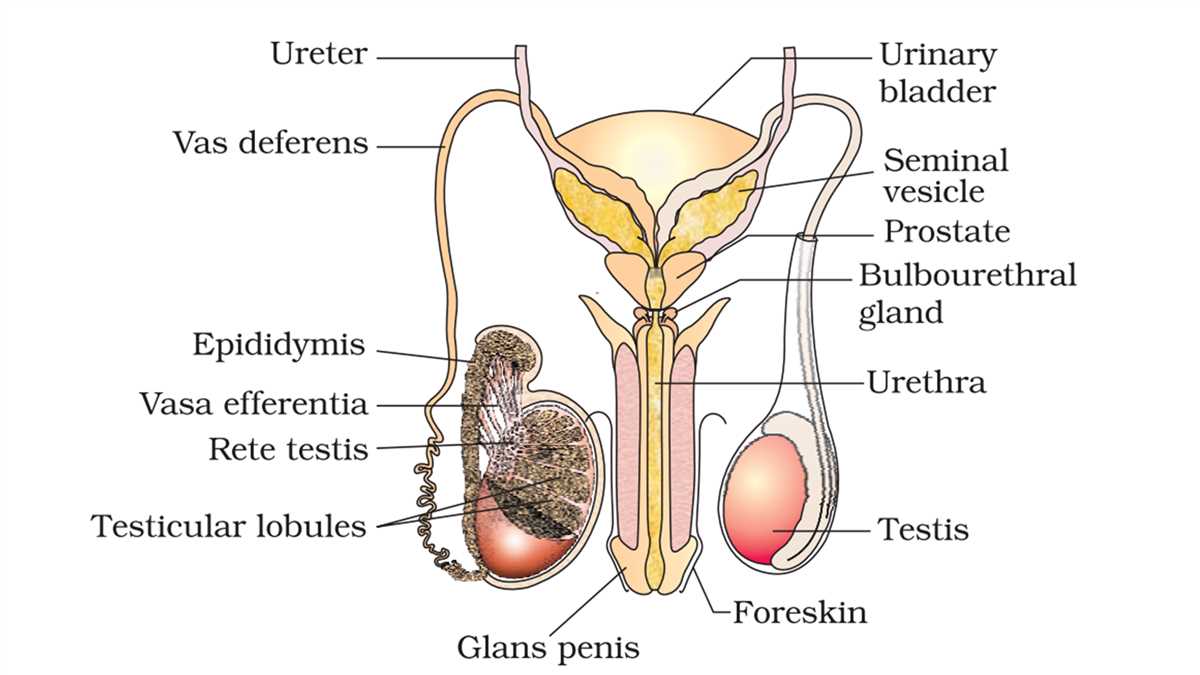
The epididymis is a highly coiled tube located on the posterior surface of each testicle in the male reproductive system. It measures about 6 meters in length and is divided into three main sections: the head, body, and tail. The epididymis plays a crucial role in the maturation and storage of sperm.
The head of the epididymis receives sperm from the seminiferous tubules, where they are produced, via tiny ducts known as efferent ductules. Within the epididymis, the sperm undergo a process called spermiation, where they acquire the ability to swim and fertilize an egg. This process involves the removal of excess cytoplasm and the development of a whip-like tail called a flagellum, which propels the sperm forward.
The body and the tail of the epididymis continue the maturation process by providing a suitable environment for the sperm to mature and gain motility. The lining of the epididymis is composed of specialized cells that produce substances crucial for sperm development and motility, such as proteins, enzymes, and ions.
Once the sperm have completed their maturation process in the epididymis, they are stored in the tail until they are ready to be ejaculated. During ejaculation, the sperm are propelled through the vas deferens, a muscular tube that connects the epididymis to the urethra, and eventually released into the female reproductive system during sexual intercourse.
In summary, the epididymis serves as a vital site for the maturation and storage of sperm. Through its specialized cells and complex structure, it provides the necessary environment and resources for the sperm to develop the ability to fertilize an egg and ensure successful reproduction.
Vas Deferens: The Transport Pathway for Sperm
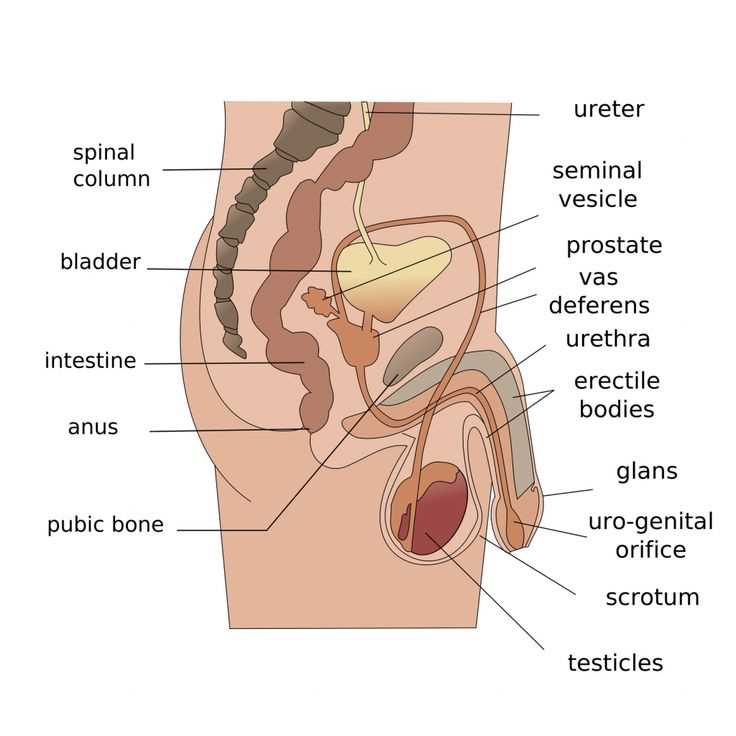
The vas deferens, also known as the ductus deferens, is an important part of the male reproductive system that serves as the transport pathway for sperm. It plays a crucial role in the process of ejaculation, allowing sperm to travel from the epididymis to the urethra. This tube-like structure is located within the spermatic cord, which extends from the testes to the pelvic region.
The vas deferens is a long, muscular tube that is approximately 18 inches in length. It is lined with smooth muscle cells, which help propel the sperm forward during ejaculation through peristaltic contractions. These contractions create a wave-like motion that pushes the sperm towards the urethra. This muscular lining also helps prevent backflow of sperm or urine into the vas deferens.
Within the vas deferens, the sperm encounter various secretions that contribute to their survival and functionality. These secretions are produced by the seminal vesicles, prostate gland, and bulbourethral gland. They provide important nutrients and substances that nourish and activate the sperm, enhancing their ability to fertilize an egg.
During sexual arousal, the vas deferens contracts to propel sperm from the epididymis towards the urethra. This contraction is coordinated with other muscles in the male reproductive system to facilitate the process of ejaculation. Once in the urethra, the sperm mix with other fluids from the seminal vesicles, prostate gland, and bulbourethral gland to form semen.
In summary, the vas deferens serves as the conduit for sperm transport in the male reproductive system. Its muscular lining and coordination with other muscles ensure the propulsion of sperm towards the urethra during ejaculation. The secretions encountered in the vas deferens help nourish and activate the sperm, contributing to their ability to fertilize an egg.
Seminal Vesicles: The Secretory Glands
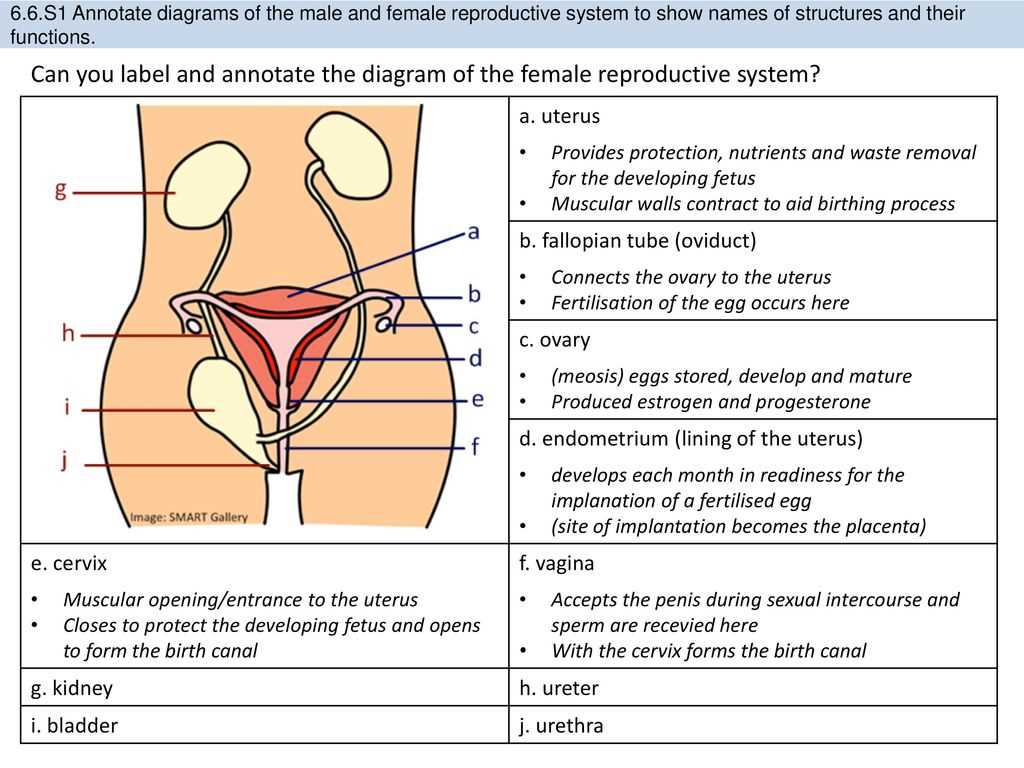
The seminal vesicles are paired secretory glands located behind the bladder in the male reproductive system. They are responsible for producing and secreting a significant portion of the seminal fluid, which plays a crucial role in sperm transportation and protection.
Structure:
The seminal vesicles are elongated, tubular structures that measure approximately 5-7 cm in length. Each seminal vesicle is connected to the ipsilateral vas deferens, forming the ejaculatory duct. The walls of the seminal vesicles are composed of smooth muscle fibers and lined with epithelial cells that secrete the seminal fluid.
Function:
The primary function of the seminal vesicles is to produce and secrete seminal fluid, which makes up a significant portion of the ejaculate. The fluid secreted by the seminal vesicles contains various substances, including fructose, prostaglandins, enzymes, proteins, and other nutrients. These components help nourish and protect sperm during their journey through the reproductive tract.
The fructose present in the seminal fluid serves as a source of energy for sperm, allowing them to move and survive longer in the female reproductive tract. Prostaglandins, on the other hand, aid in the contraction of the female reproductive organs, helping propel the sperm towards the egg during fertilization.
In addition to nutrient provision and sperm protection, the seminal fluid also helps neutralize the acidic environment of the vagina, ensuring the survival and motility of sperm. It also provides lubrication, facilitating the movement of sperm through the male urethra during ejaculation.
Conclusion:
The seminal vesicles are vital glands in the male reproductive system, playing a significant role in the production and secretion of seminal fluid. Their secretions provide essential nutrients, protection, and lubrication to sperm, ensuring their survival and successful fertilization. Understanding the structure and function of the seminal vesicles is crucial in comprehending the overall reproductive process and male fertility.
Prostate Gland: The Contributor of Seminal Fluid
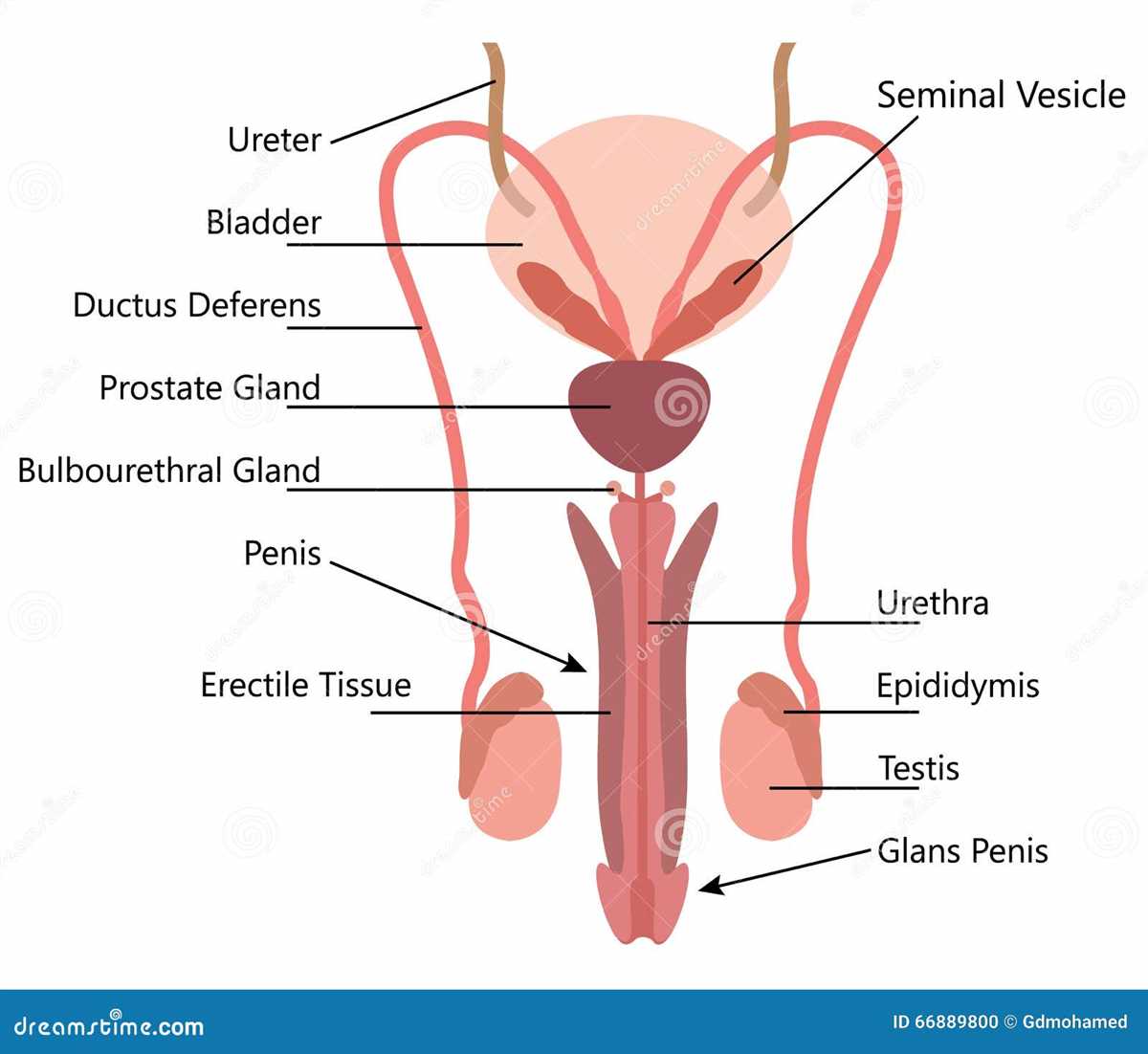
The prostate gland is an integral part of the male reproductive system, responsible for the production and secretion of seminal fluid. Located just below the bladder, surrounding the urethra, this walnut-sized gland plays a crucial role in the process of ejaculation. Its secretion makes up a significant portion of the semen, contributing to the nourishment, protection, and transportation of sperm.
The prostate gland consists of both smooth muscle and glandular tissue, organized into lobes and surrounded by a fibrous capsule. It is under the influence of male sex hormones, particularly testosterone, which stimulates its growth and development during puberty. As men age, the prostate gland continues to enlarge, which can sometimes lead to various medical conditions.
Function:
The primary function of the prostate gland is to produce and store seminal fluid. This fluid, also known as prostatic fluid, is released during ejaculation and combines with sperm from the testicles and other secretions from the seminal vesicles and bulbourethral glands. The resulting mixture forms the semen, which provides nutrients and protection to the sperm as they travel through the female reproductive system.
Anatomy:
The prostate gland is divided into several lobes, including the anterior, posterior, and lateral lobes. The gland is surrounded by a fibrous capsule, which helps maintain its shape and structure. The urethra passes through the center of the prostate gland, allowing the prostatic fluid to mix with urine during ejaculation. Surrounding the prostate gland are the seminal vesicles, which produce additional fluids that contribute to the semen.
Common Conditions:
- Prostatitis: Inflammation of the prostate gland, often caused by infection or other factors.
- Benign Prostatic Hyperplasia (BPH): Non-cancerous enlargement of the prostate gland, commonly affecting older men.
- Prostate Cancer: The most common cancer in men, characterized by the abnormal growth of cells in the prostate gland.
To maintain a healthy prostate gland, regular check-ups and screenings are recommended, especially for individuals over the age of 40. Early detection and treatment of any abnormalities or conditions can help preserve the proper functioning of the prostate gland and overall reproductive health.
Penis: The Organ of Sexual Intercourse
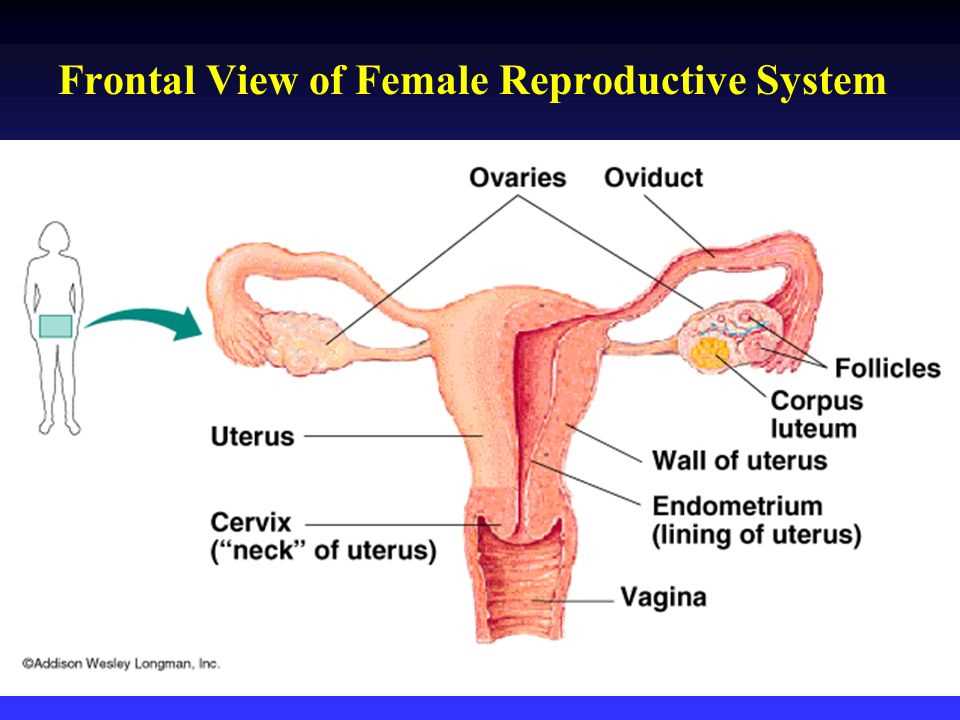
The penis is a crucial organ in the reproductive system of males, responsible for sexual intercourse and the delivery of sperm. It plays a vital role in reproduction and the overall sexual health of an individual. Let’s explore the anatomy and function of this remarkable organ.
Anatomy of the Penis
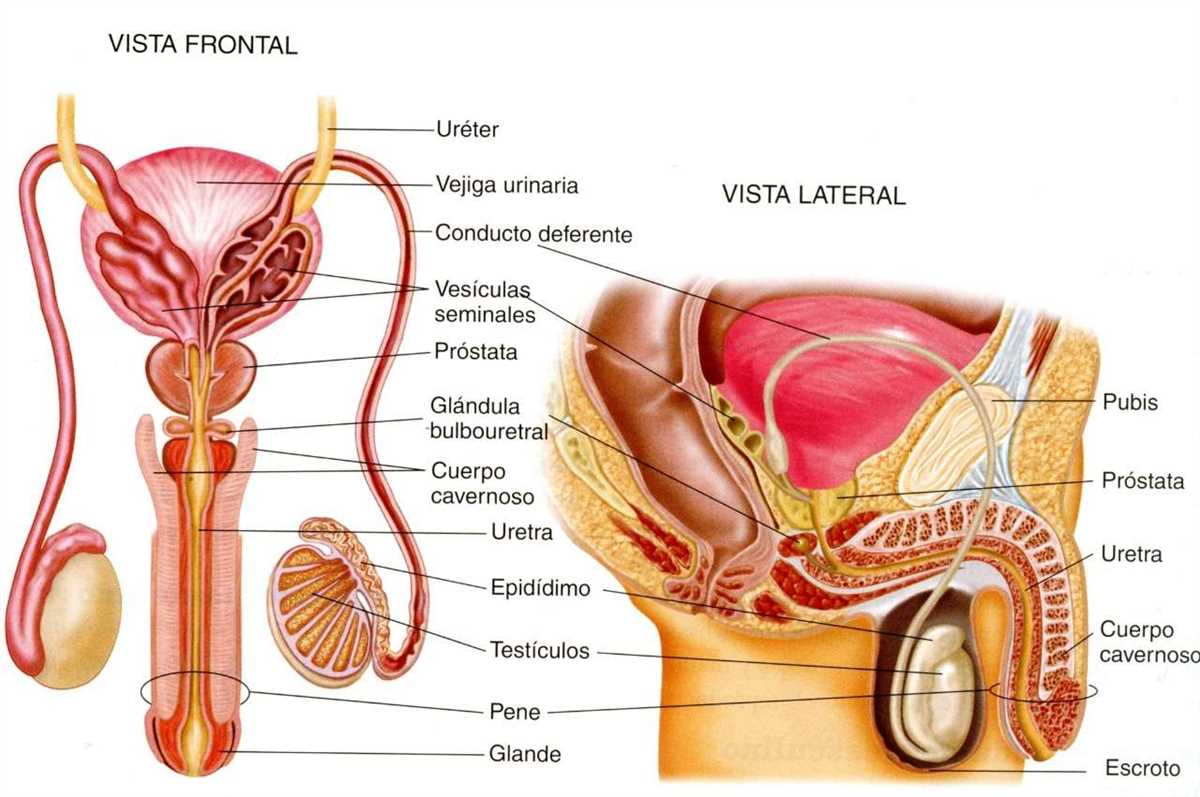
The penis is composed of three main parts: the root, body, and glans. The root of the penis is attached to the pelvic bones and provides stability during erection. The body, also known as the shaft, is the elongated part of the penis. It contains three cylindrical columns of erectile tissue – two corpora cavernosa on the upper side and one corpus spongiosum on the underside. The glans, located at the tip of the penis, is a highly sensitive region covered by a fold of skin called the foreskin.
The penis also includes the urethra, a tube that runs through the center of the penis and serves both as a conduit for urine and semen. The urethra is surrounded by the corpus spongiosum, which helps maintain its patency during erection.
Function of the Penis
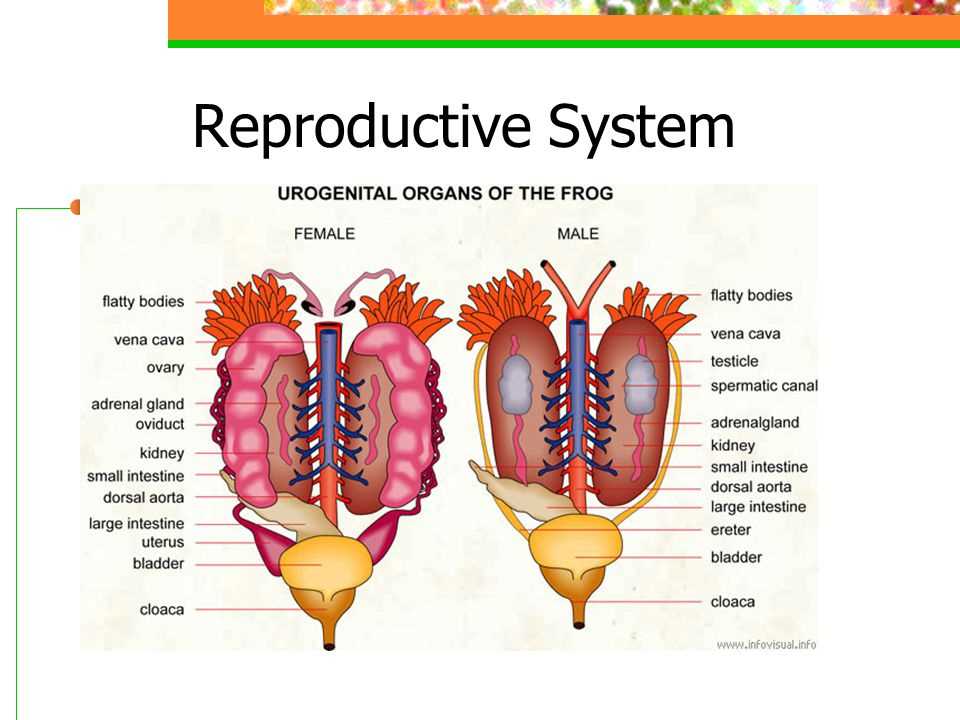
The primary function of the penis is to facilitate sexual intercourse. During arousal, the penis becomes erect, a process initiated by sexual stimulation. This erection occurs due to increased blood flow to the erectile tissue within the corpora cavernosa and corpus spongiosum, leading to the expansion and hardening of the penis.
During sexual intercourse, the penis is inserted into the vagina, enabling the delivery of sperm into the female reproductive tract. The penis also plays a role in pleasure and sexual satisfaction, as its sensitive nerves respond to stimulation and contribute to the overall sexual experience.
Conclusion
The penis is a remarkable organ that plays a crucial role in the reproductive system and sexual health of males. Its anatomical structures and functions are essential for sexual intercourse, the delivery of sperm, and overall sexual pleasure. Understanding the penis’s anatomy and function is vital in maintaining reproductive health and addressing any potential issues that may arise.